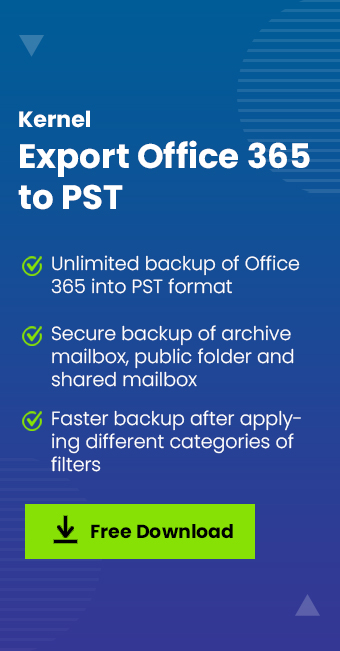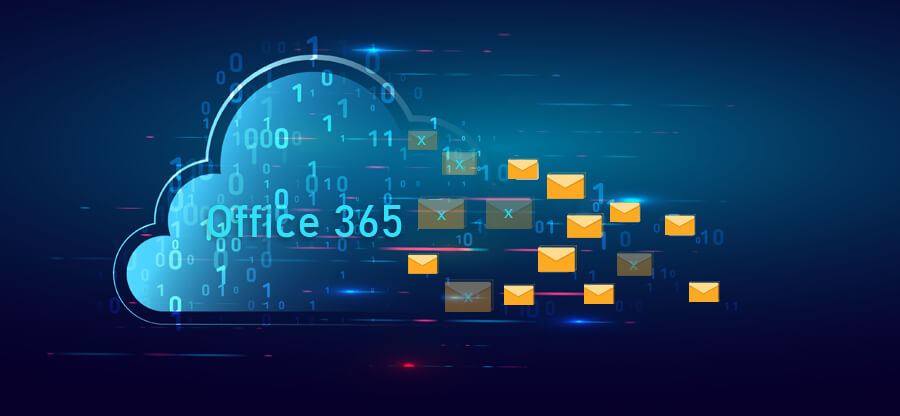Read time 5 minutes
Microsoft 365 gives a business multiple benefits that affect the overall professional email communication. The user can use the applications online and install the MS Office applications on the computer as stand-alone applications.
The business and enterprise-based plans have Exchange Online in them, and the Administrator can create multiple types of mailboxes in them. Apart from the user mailboxes, several mailboxes are making communication easier.
Types of Office 365 Mailboxes
There is a lot of confusion revolving around Microsoft Office 365 mailboxes. Some users usually don’t understand the mailboxes properly. In this post, we will try to elaborate on Office 365 mailbox types and their use so that you can use different types of mailboxes more efficiently.
Generally, there are six types of mail mailboxes in Office 365. Some of these mailbox types are paid while some can be created and accessed for free.
- Mailbox (Requires license)
- Shared mailbox (Free)
- Distribution Group (Free)
- Office 365 Groups (Free)
- Resource mailbox (Free)
- Contacts (Free)
We will describe each of these mailbox types, and what is their proper use.
Mailbox
This is the first mailbox type that you will get by default after purchasing an Office 365 subscription that includes Exchange Online. It is a licensed mailbox and requires login. It is designed for personal mail and other items. In simple terms, it will be the mailbox that you will use to send emails, attachments, and messages to others.
You can have a specific domain email address for your primary mailbox. It can either be ending with your organization’s name or anything else. For example, it could be myname@mycompany.com
Shared Mailboxes
A shared mailbox is often created by the Office 365 admin, and then users are added to it as members. It is entirely free to create a shared mailbox in office 365 with storage of up to 50 GB. Shared mailboxes make it easy for a specific group to monitor and send email from a common email address.
Also, if any person in the group has sent a reply to the received email in a shared mailbox, the sent address will be the email address of the shared mailbox. Shared Mailbox is a great way to avoid cluttering of your primary inbox due to unnecessary emails and spam messages.
- Every user assigned to the shared mailbox will have full control over the mail, which means if any user in a shared mailbox deletes a message, moves an email, or replies to an email from the inbox, then it will be reflected across all the users
- Every user in a shared mailbox can reply an email, and it will appear from the shared mailbox address in the receiver’s mailbox
- When you receive an email in a shared mailbox, you will not get the “new email’ pop-up like your primary mailbox
- If you use it without a license, you will get only 50 GB storage, and if the storage exceeds, then you will have to purchase an Exchange online license for it.
- A shared mailbox can be opened on Outlook Web App or Outlook Desktop app if you have full permissions to the shared mailbox. These points define how a shared mailbox is completely different from a primary mailbox.
Distribution Groups
Distribution groups are created to add specific members related to a team or project and send them emails. Also, it is used to communicate with clients or customers with a single email. An email to the distribution group will be received by each member of the group (in their primary mailbox).
Office 365 Groups
Office 365 Groups were recently introduced by Microsoft to enhance collaborative work. You need to create a name and email address and then assign users. With Office 365 Groups, you get access to the mailbox, shared calendar, a document library stored in the cloud, a planner, a SharePoint site, and more.
Also, you are allowed to invite external guests to Office 365 Groups if you want someone to join the group for conversation. You can access all the Office 365 Group features on Outlook 2016, Outlook Web App, Outlook 2016 for Mac, and Outlook on Mobile.
Resource Mailboxes
Also known as an Equipment mailbox or room mailbox, this type of mailbox is used to reserve and coordinate rooms and equipment. For example, a video conference room is a type of resource mailbox. If you include a resource mailbox in a meeting request or calendar item, it means you are reserving the resource for that specific time.
Contacts
Contacts in your Office 365 mailbox are actually external email addresses with contact information already added to the global address list. Adding any person to Contacts will allow you to add that person to the distribution group. For example, let’s say you have to send an external contact using distribution list, then you will have to add that email address as a contact, and then add that person to the distribution group.
Conclusion
Office 365 is amongst the best cloud platforms that can give you the freedom to manage your email communication very efficiently. For its efficient use, it is necessary to know the different types of mailboxes and their uses. In this article, we have discussed different types of mailboxes provided by Office 365. Though Office 365 data is extremely safe as per Microsoft, it is necessary in many situations to backup these mailboxes, including user mailboxes, shared mailboxes, and groups. And this can be done using an efficient tool like Kernel Office 365 Backup & Restore.








